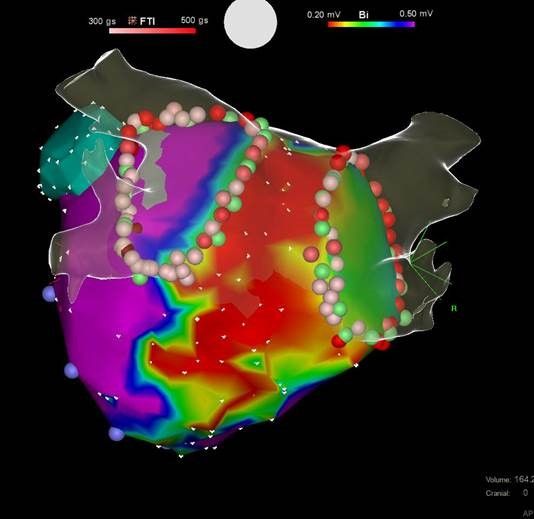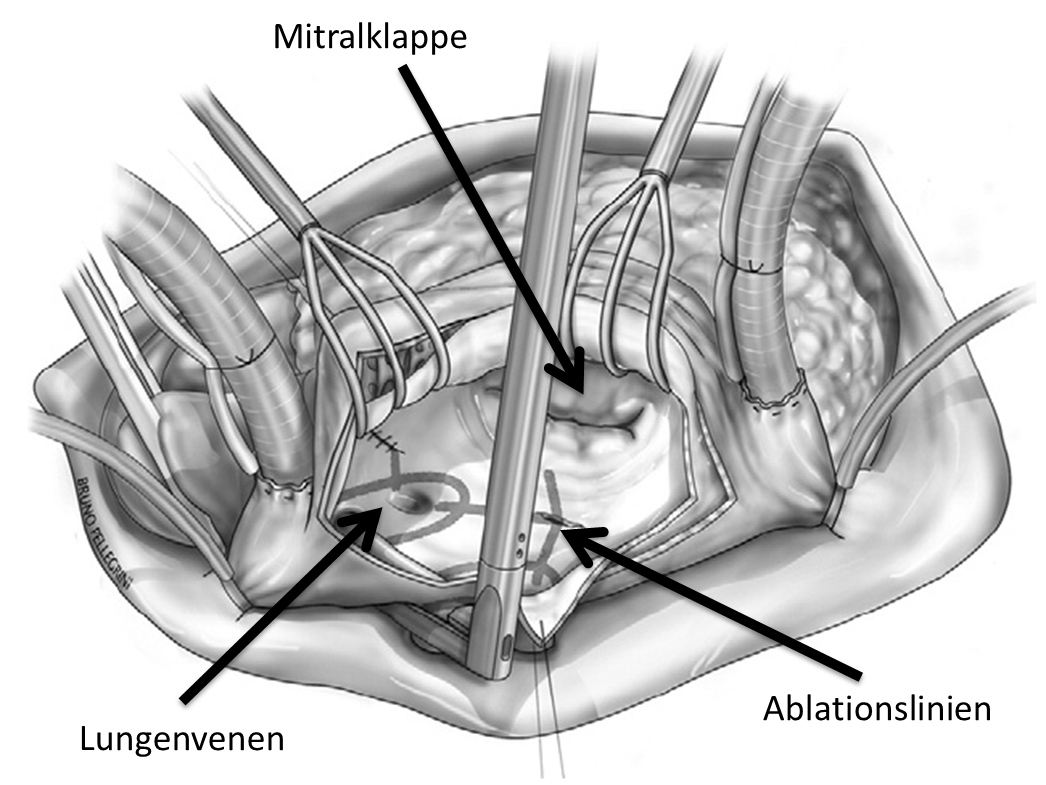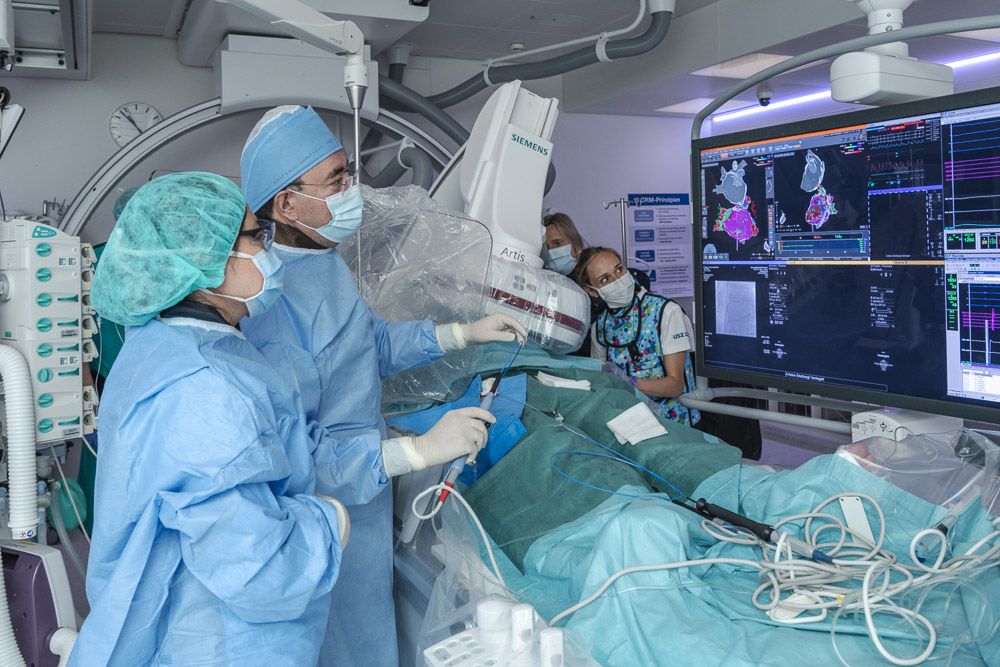Frequency and dangers of atrial fibrillation
Due to the frequency of high blood pressure and the increasing life expectancy, the prevalence of atrial fibrillation continues to rise – with a corresponding burden for patients. The greatest danger for patients with atrial fibrillation is a stroke, as uncoordinated contraction of the atria can lead to the formation of clots that can embolize the brain. The modern “new” anticoagulants (NOACs) have now established themselves as the standard therapy for preventing such an event. However, prudent and differentiated use of these preparations is necessary in order to achieve maximum safety and effectiveness for patients. To this end, we are available for numerous training courses as well as for internal and external consultation. For patients with a contraindication to anticoagulation, we offer interventional atrial ear closure following an interdisciplinary discussion.
The second major problem with atrial fibrillation is the arrhythmia itself. The discomfort caused by the irregular, often rapid pulse impairs the quality of life
Treatment options
In our special consultation hours, we create a personal treatment strategy for each patient together with the resident doctors. After an initial attempt to control the rhythm with medication, and in some cases even before that, catheter ablation has established itself as the method of choice for treating atrial fibrillation. In the case of paroxysmal atrial fibrillation and the absence of structural heart disease, 70-90% of patients can be treated successfully. In patients with heart failure, it has even been shown that catheter ablation of atrial fibrillation can increase the probability of survival. Basically, the earlier the treatment, the higher the chances of success. Our center uses state-of-the-art methods using CT (Fig. 1) and MRI, fusion procedures with moving fluoroscopic images and 3D mapping systems.

Atrial fibrillation can also be treated surgically in the open heart (“Cox-Maze procedure”). The atria are opened and closed again by means of incisions, which prevents the development and spread of atrial fibrillation. Today, a corresponding scar pattern can also be created using ablation forceps with radiofrequency energy or cold. Surgical ablation is mainly performed on patients with atrial fibrillation who are undergoing cardiac surgery. After unsuccessful catheter ablation, a mini-thoracotomy can be performed on the open atrium without opening the chest, even without an accompanying operation. This procedure is usually combined with closure of the left atrial appendage to reduce the risk of stroke. Careful selection of the right patients by an interdisciplinary Heart Team is also very important here.

The frequency of ventricular arrhythmias is also increasing – particularly in patients who have suffered a heart attack and severely impaired pump function. If drug therapy fails, catheter ablation is also used here. Catheter ablation is increasingly being used primarily in young patients without structural heart changes. Catheter ablation of ventricular tachycardia is predominantly performed endovascularly (“from the inside”), but may also be necessary epicardially. The pericardium is punctured from the outside under the sternum and the catheters are navigated in the pericardium.


